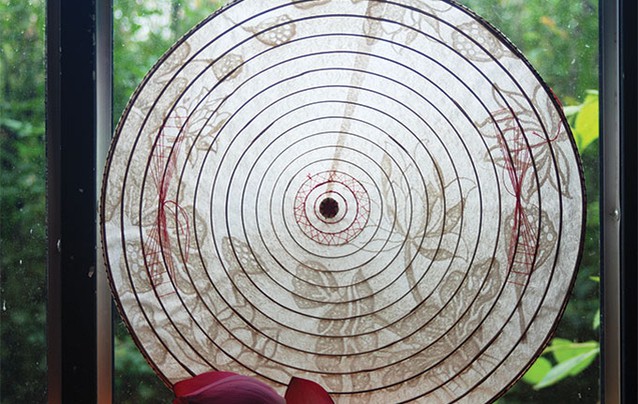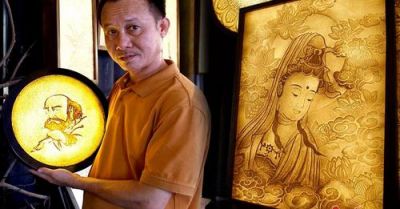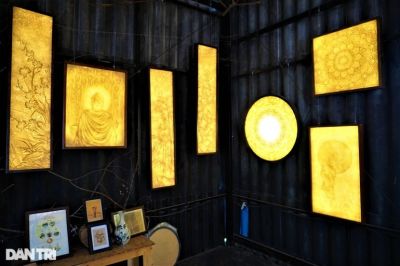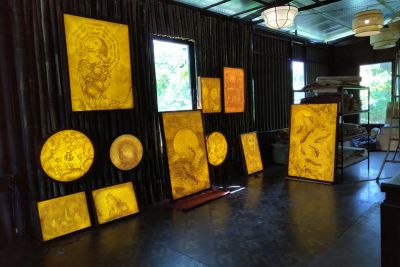Uniquely crafted
Paper made from nipa palm in a small village near Hoi An has slowly found favor among local and foreign visitors alike.
Together with Hoi An ancient town and its ancient houses, Cam Thanh village has become another popular destination in central Quang Nam province thanks to its world of nipa palm forests. Visitors can enjoy rowboat trips under nipa palms and the charming surrounding landscape and learn about the role the tree plays in local life. They can also contemplate the superb art and craft paper products made from nipa palm at the outstanding Viet Paper Garden.
MADE IN HOI AN A
Combination of a paper-making factory and a display area, Viet Paper Garden was opened in 2016 after its founder, Truong Tan Tho, and two partners visited Cam Thanh village and settled on the idea of making paper products from nipa palm.
Born in Quang Nam, Tho nurtured the dream of making a product that has its own mark and distinct source, different to the massive amounts of Chinese products today. “There are many types of trees that can be made into paper,” he told The Guide. “But I chose nipa palm because it is common in Quang Nam and has become a symbol of Cam Thanh, the most popular ecotourism site in Hoi An. I also target sustainable ecological development, so chose a tree with a stable ecological system.”
Having experience in paper making, printing and painting, they started work right away, which requires a meticulousness mind as most steps are done by hand.
The nipa palm is split into small pieces that are thoroughly cleaned by soaking them in water before being cooked with lime for 24 hours. They are then put into a grinding machine and pulverized into powder. The partners also made the grinding machine themselves, based on a technical drawing of a manual paper grinding machine from Europe in the early 20th century.
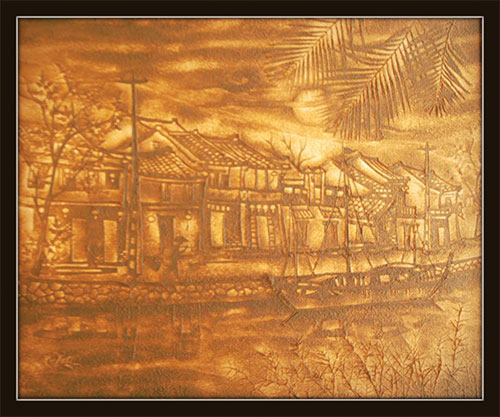
The pulp is then mixed with water and spread out within a wooden frame with voile screens and cutouts of designs and pictures, then taken out and sprayed with water in varying degrees of force to shape and design the powdery substance on the surface. Once this is done, the cutouts are removed, leaving beautiful patterns, designs and pictures. The frame is then dried in the sun for several days. This printing technique using water pressure comes from the Japanese, according to Tho. “All of the process is done by hand and no chemical substances are used, as we want to provide environmentally-friendly products,” he explained.
From this a variety of products are made, including furniture, ornaments, screens, curtains, signboards, lights, lanterns, bags, purses, hand-fans, postcards, origami works, conical hats, paintings, and so on. In addition to furniture and craft products, the paper is also used for envelopes and packaging, with an identifying mark placed on each product.
A typical feature of these products is that they include images of Vietnam in general and Hoi An and Quang Nam in particular, like “ao dai” (Vietnam’s traditional dress), “xich lo” (cyclo), patterns of bronze drums, lotus, Hoi An’s ancient houses, the Japanese Covered Bridge, the Hoai River, wooden boats, beaches, and fish from the region. “We believe people will recognize Hoi An when they see these products,” Tho said. “We therefore contribute a small part to promoting the image of our hometown among others, especially foreigners.”
Another unique feature of nipa palm paper is the effect of light. Under the sun or any light source they appear more mysterious, especially the color of the light as it passes through them.
ECO-FRIENDLY VIETNAMESE MARK
While undoubtedly impressive with unique features, promoting nipa palm paper products was an issue early on. “It was too new. Many people expressed interest when they saw them, but that was all,” he said. “Few opened their wallets or purses and bought them. Perhaps they didn’t understand its cultural value or how much work it takes from the artisan.”
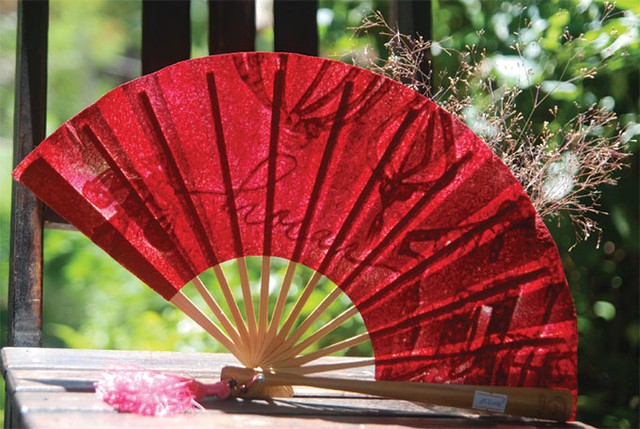
So only a few sold in the beginning. Profits failed to materialize and more investment was needed. Gradually, those involved became discouraged and his partners and some of his staff left. But Tho didn’t give up. He believed in his special product and tried even harder.
He did more research to increase the durability and function of products. “My family and friends asked me why I tried so hard with this project,” he remembers. “I was successful with other business ventures, so if it became too tough, they told me, I could always return to that. But for me, failure is a challenge and it motivates me to make an even greater effort to be successful. If I give up when there are difficulties, how can I know if success is possible? It’s too easy to quit, so I stayed in the game.”
Thanks to his passion and patience, his products gradually gained more attention from customers. He appreciated the first individuals who were willing to pay no small sum for his products as decorative items. It helped him introduce them to a wider audience and they became a special brand of Hoi An.
Tho also shared his happiness at the packaging he made for VNCACAO Co., Ltd (t.bros), which won silver at the annual 2018 Academy of Chocolate Awards. The packaging is indeed impressive, with images of farmers in Ben Tre, Dak Lak and Ba Ria Vung Tau, the three provinces producing cacao for chocolate, resembling a painting when the packaging is opened.
Now, as Viet Paper Garden and its nipa palm products are known more widely, Tho needs to continue improving his products because each customer has different demands, presenting other challenges but also motivation. “For example, some orders are for waterproof paper or paper for painting on,” he said, “It’s a long haul to find continued success , but it’s also very interesting. Maybe I will make new products and use new types of materials, to produce a more diverse range of paper products that are ‘Made in Vietnam’.”
(Theo: http://theguide.vneconomictimes.com/culture/uniquely-crafted-20190807103540423.htm)


